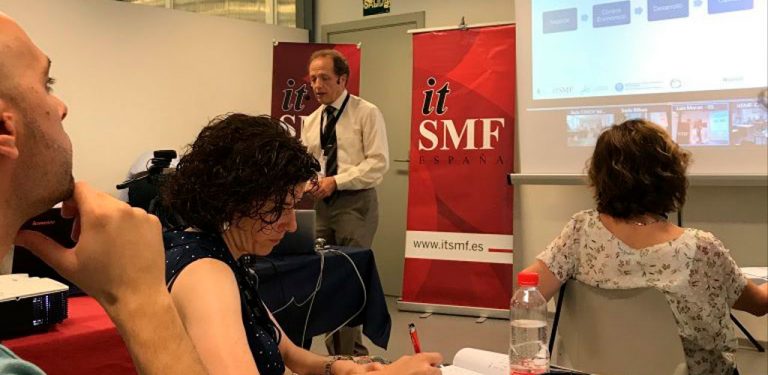Why do some companies deploy strategies that make them advance faster than their competitors? How do they generate more change with fewer errors and also generate more satisfaction and value in their customers? With these questions and wanting to reveal the big secret, itSMF Spain organized last week the Summer Course 2017 "The Secret of the Druids" by DevOps and Change Management, where Future Space participated as a speaker at the conference held at the Universidad Politécnica de Madrid Campus Sur.
Much has been heard lately about DevOps and the benefits this methodology brings to software development. But as always when a new trend arrives, one of the doubts we have is if companies will bet on its implementation. DevOps, an English acronym for Development & Operations, is a methodology that is revolutionizing the way software is developed, whose main objective is to generate updates on a continuous basis, which has an impact not only at a technological level but also at an organizational level, since it focuses on the collaboration and communication of people from different areas that are involved or committed to software development.
Together they cover the entire software cycle, providing faster, more reliable and higher quality processes, so DevOps' ultimate goal is to minimize the risk of delivery changes and thus provide greater value to customers and the business.
In this sense, Juanjo Martínez Pagán, Commercial Director of Future Space presented the masterclass "Change management towards DevOps teams" a historical journey through the different profiles and organizational structures in ICT, how they have come to DevOps, and what changes are necessary and applicable to companies that want to achieve this advance.
We can see that the equipment in the early stages (60's to 90's) was based on very technical profiles with linear vision, structured thinking and highly process oriented, i.e. the value is mainly in the mechanization of the process. As for the culture of the companies, everything tends to be hierarchical and follow a plan "on foot". Similarly, processes and deployments needed months or even years to be completed with the expected quality standards.
After the 90s and until the mid-2000s, the era of "Web 2.0" reigned, where the superabundance of available information and the availability of the web favoured a higher user demand and therefore to satisfy these needs, teams and companies were transformed again. This time we have a holistic vision, dynamic mentality and become proactive instead of waiting for approval and for processes to work in a predictable and unaltered way. The general spirit of the organizations becomes more agile, focused on the final customer and adapting to the ever changing needs of the customer and the environment, using scalability and speed as resources to achieve this, so we now have smaller projects, but achieved in months or weeks.
As we reach the 2010 decade and beyond, teams are now fully multi-disciplinary and collaborate as a team to further streamline processes, lean and ring work is used to encourage continuous and rapid deployment, and the focus that was once on process mechanization is now on speed, transparency and adding value. But what levers of change have been necessary to achieve this? What changes occurred in this transition?
The 4 basic pillars in cultural change are: Training, motivation, communication and incorporation of talent. The way teams are now formed is a synergy of diverse talents and skills that receive constant motivation and mentoring. The figure of the boss becomes an "owner" of the project, encouraging everyone to get involved with the same enthusiasm and take it as their own challenge and become the ones who decide about it.
What challenges and paths lie ahead? Analyze the state of your organization in each of the axes, implement parallel structures ¿CIO - CDO or integrated? It is also advisable to choose a project or an area where operations with development can be integrated and deployments automated: for example Big Data. In terms of people and culture, create the teams with existing people and new profiles, communicate and implement the new culture and above all, establish objectives, metrics and monitoring mechanisms.











